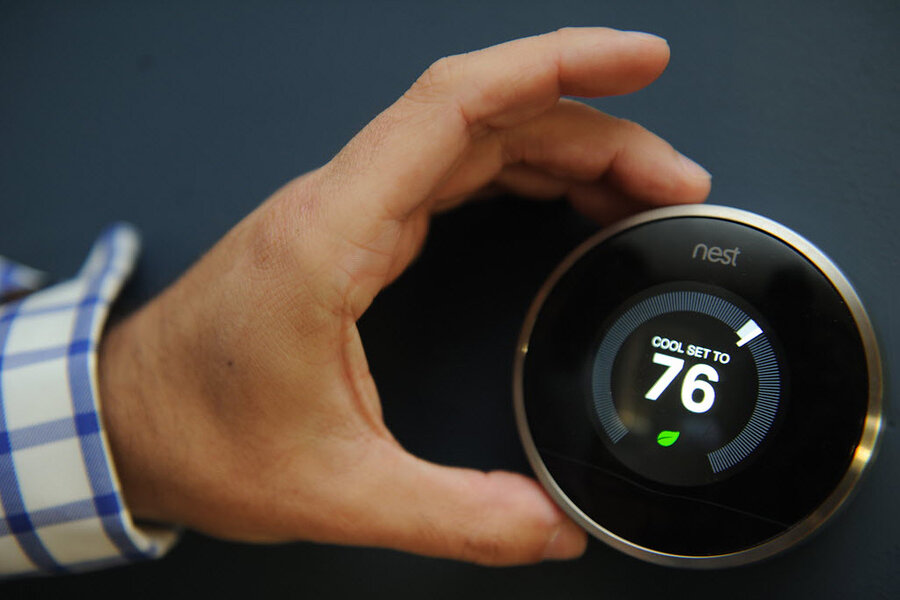With Weave, Nest hopes more devices will tap into its app
Loading...
Since Nest Labs unveiled its first Internet-connected thermostat in 2011, the company has aimed for simplicity. Nest has often marketed its products – Internet-connected home appliances that owners can control via smartphone – as part of what Nest calls “the thoughtful home.”
Now owned by Google, the "Internet of Things" company is trying to get more people to embrace the idea of a fully-connected home, announcing on Thursday that it will release Weave, its proprietary connection software, to work with devices made by other manufacturers.
In a bid to compete with rivals such as Apple, which released its own connected-home software, HomeKit, in 2014, Nest is partnering with device manufacturers in areas ranging from lighting to locks to home audio. There are more than 5 billion Internet of Things devices currently in use, according to the market research firm Gartner. Nest wants more of them to speak the same language.
Appliances connected using Weave will work even when a wireless connection isn’t available, reducing the devices’ latency to less than 100 milliseconds and improving their security, the company says in a statement.
For example, if a new Internet-connected door lock – made by veteran manufacturer Yale – has its Internet connection severed by a burglar, it will still work, accessible from a smartphone with the Nest App.
Weave makes this possible by connecting the company’s app to a Nest data cloud, so devices such as Yale’s lock are still able to connect with other devices in the home even if the lock loses its Internet connection, Fast Company reports. The lock also stores 10 days of history, showing how it was used and can keep the door closed using a magnetometer.
The company says Weave represents a new opportunity for developers, who will be able to integrate other devices into Nest’s app through the Works with Nest store and use its cloud-based service beginning in early 2016.
“Building a connected product is hard,” Matt Rogers, the company’s vice president of engineering, told VentureBeat. “We’ve been doing it for the past five years and have first-hand experience with the challenges. That’s why we want to make it easier for developers.... [They] have an end-to-end solution when they work with Nest, and can use only the parts of the program that meet their needs.”
Other experts say despite the company’s enthusiastic marketing, the introduction of Weave may have a more limited impact.
“I don't think this will change things fundamentally, it is just another protocol among several, and still fails to address fundamental security, privacy, and functionality concerns,” says Alex Pentland, a computer science professor at the Massachusetts of Institute of Technology and director of the school’s Connection Science and Human Dynamics Lab, in an e-mail to the Monitor.
While Internet of Things devices continue to be fodder for discussions about privacy, the new fail-safe connection appears to be a big selling point for Nest.
The company is also expanding existing products such as its Nest Cam cloud-based video monitoring system to support developers who want to have their products work with Nest devices. For example, the Petnet app, which lets people track when and how much their pets are fed, could take a photo using the Nest cam when their pet starts eating.
The Yale lock, which is the first device to be released that works with the new Weave platform, will be available in 2016, Nest says.







